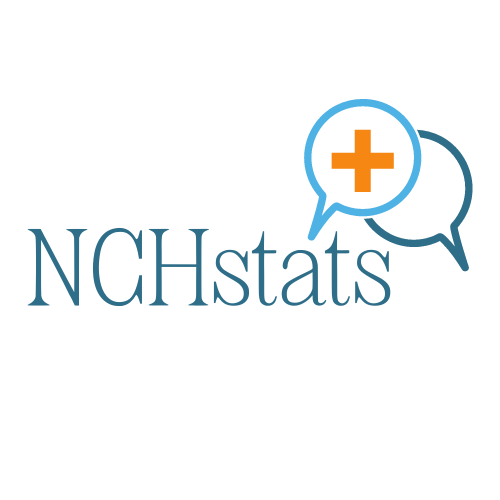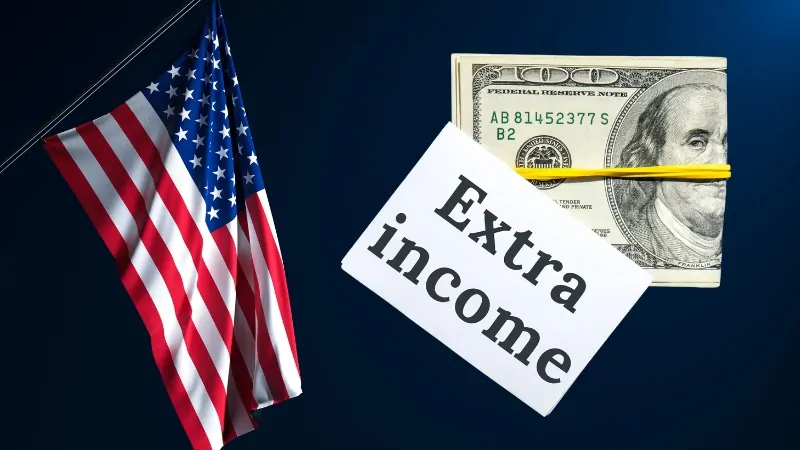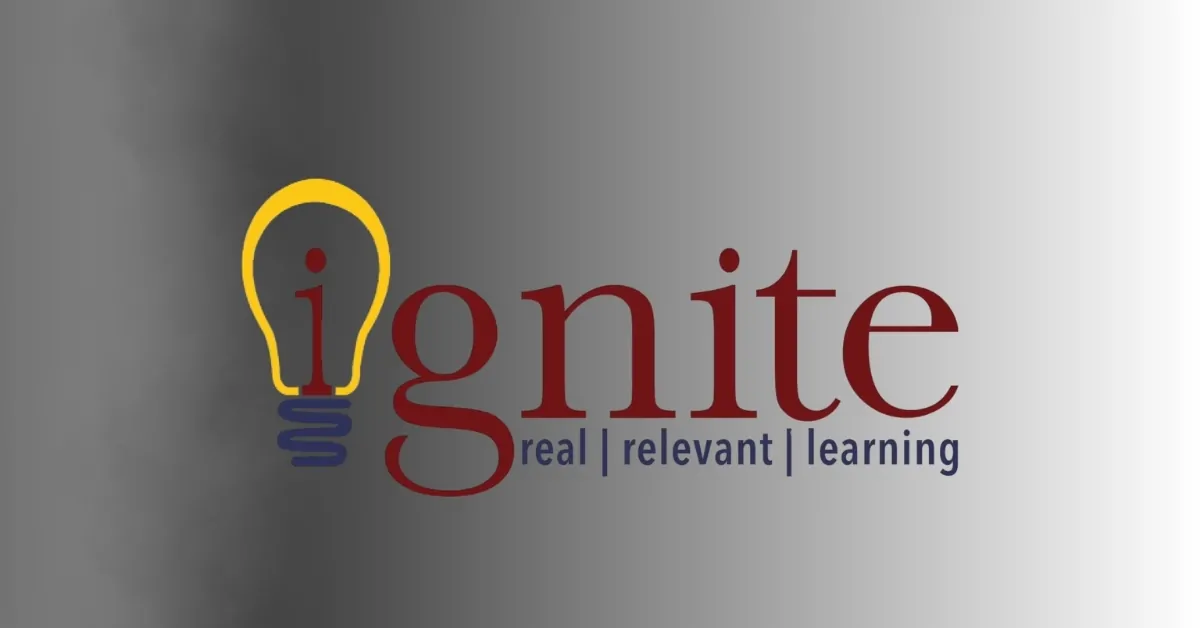Recent surveys indicate that approximately one in three adults in the U.S. now have a side hustle, according to Bankrate. While not everyone is earning big, the collective impact is massive.
On average, Americans earn around $885 per month from their side gigs, but the median figure is closer to $200, meaning that while a few earn thousands, many simply use their hustle as a light financial buffer.
Generationally, Gen Z and millennials dominate the space, with nearly half of Gen Z workers reporting some form of side gig. For them, the appeal is not just extra cash, but also flexibility and independence from the rigid 9–5 model.
Older generations, such as Gen X and baby boomers, are less involved but still represent a significant share, often turning to side gigs in retirement or as a way to cover rising expenses.
Top 10 Side Hustles in 2025
According to updated gig economy earnings data, the 10 most popular side hustles in 2025 – ranked by participation and median annual earnings – are:
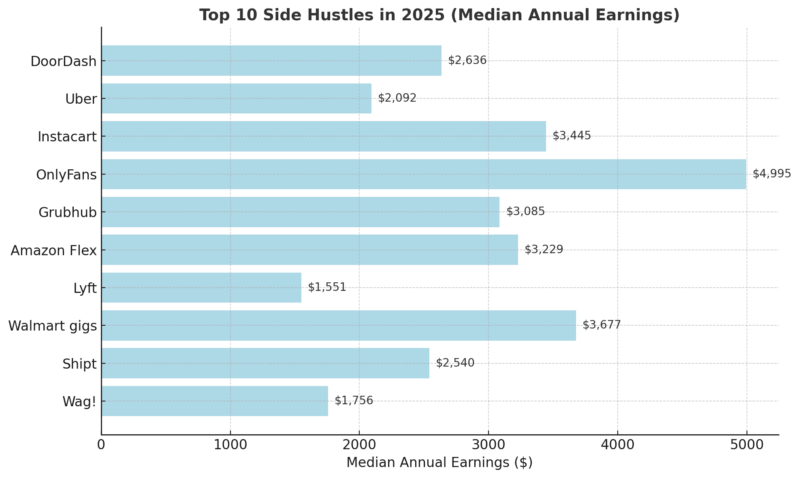
A few things stand out here:
State-by-State Winners
State
#1 side hustle (2025)
Alabama
DoorDash
Alaska
DoorDash
Arizona
Day trading
Arkansas
DoorDash
California
DoorDash
Colorado
Pet sitting
Connecticut
Day trading
Delaware
Local handyman
Florida
Retail arbitrage
Georgia
Day trading
Hawaii
Car detailing
Idaho
Online surveys
Illinois
Babysitting
Indiana
DoorDash
Iowa
Starting a podcast
Kansas
DoorDash
Kentucky
Day trading
Louisiana
Day trading
Maine
Local handyman
Maryland
DoorDash
Massachusetts
Arbitrage betting
Michigan
Babysitting
Minnesota
Babysitting
Mississippi
Dropshipping
Missouri
DoorDash
Montana
Pet sitting
Nebraska
Buy & resell
Nevada
Uber driving
New Hampshire
Pet sitting
New Jersey
Arbitrage betting
New Mexico
Cleaning
New York
Freelance virtual assistant
North Carolina
Pet sitting
North Dakota
Babysitting
Ohio
Babysitting
Oklahoma
DoorDash
Oregon
DoorDash
Pennsylvania
Babysitting
Rhode Island
DoorDash
South Carolina
DoorDash
South Dakota
Online tutoring
Tennessee
DoorDash
Texas
DoorDash
Utah
Day trading
Vermont
Pet sitting
Virginia
Online tutoring
Washington
Pet sitting
West Virginia
Online surveys
Wisconsin
Babysitting
Wyoming
Trading (day trading)
While the top 10 paints a national picture, side hustles aren’t evenly distributed. Some states lean heavily into delivery platforms, while others have unique winners:
This regional variation reflects a mix of infrastructure, demographics, and culture. States with sprawling suburbs lean toward food delivery, while dense urban centers support ridesharing. In smaller states, niche or online hustles sometimes outcompete the big platforms.
Who Has a Side Hustle in 2025?
The side hustle economy is not a small niche – it’s a massive cultural shift. In 2025, around 39% of U.S. adults report having at least one side hustle.
That translates to roughly 80 million people across the country looking for ways to bring in extra income. What’s even more interesting is how this breaks down by generation.
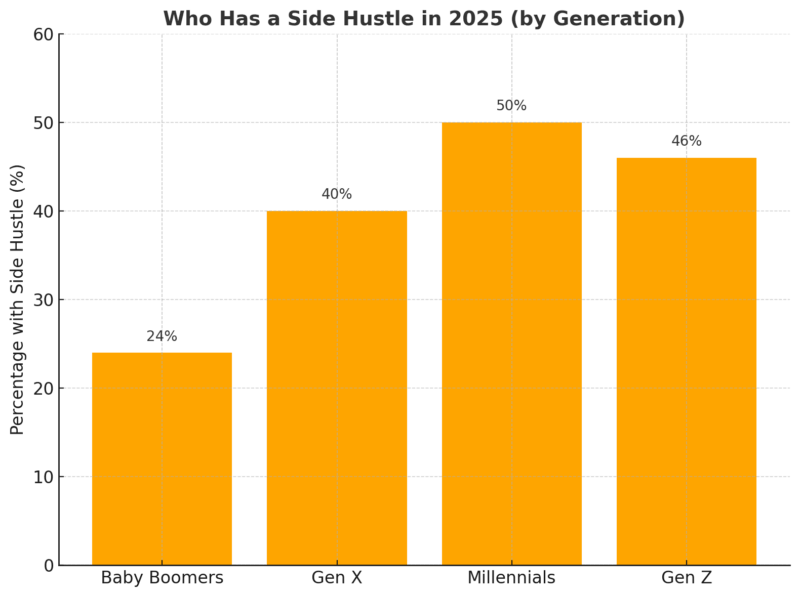
Globally, the trend doesn’t stop at U.S. borders. Surveys show 42% of Gen Z in the U.K. and 39% of Canadian millennials also maintain side hustles. This suggests that what began as an American gig economy wave has spread into a worldwide rethinking of work.
For readers, this means side hustling is not just a “young person’s trend” or a reaction to inflation. It’s becoming a new normal across demographics and countries, reflecting deeper changes in how people value flexibility and control in their working lives.
Why People Side Hustle (Motivations Beyond Money)
The most obvious reason for starting a side hustle is to make extra money – but that’s only the surface. Surveys in 2025 highlight more diverse motivations:
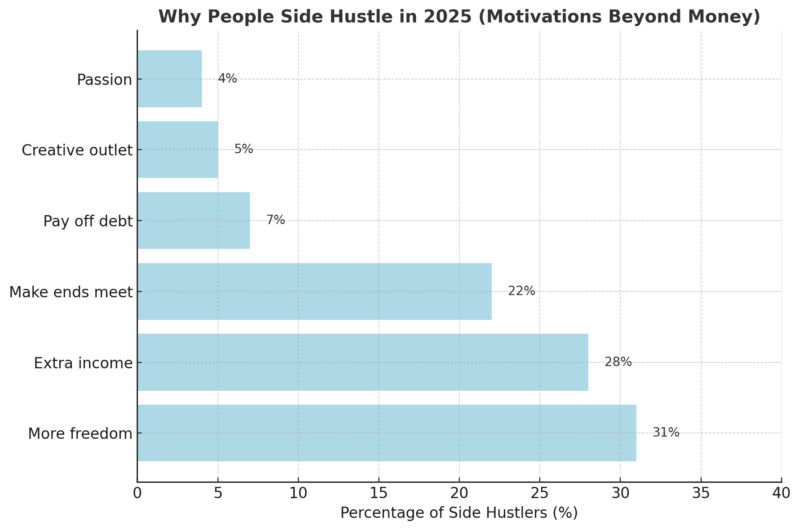
For some, it’s survival – paying the rent or covering groceries. For others, it’s lifestyle – funding vacations, new skills, or passion projects.
And for a small but growing segment, side hustles are the pathway to entrepreneurship, where today’s part-time project could become tomorrow’s full-time business.
How Much Time Side Hustlers Put In
One of the most relatable stats about side hustling is the time spent. On average, people dedicate 11–16 hours per week to their side hustles. But averages only tell part of the story.
Weekly Hours Spent
% of side hustlers
Typical Hustles
0–5 hours
54%
Surveys, small reselling, light delivery work, and microtask platforms like JumpTask.
5–10 hours
24%
Pet sitting, freelance gigs, e-commerce part-time.
11–20 hours
13%
Serious delivery drivers, tutors, and YouTube creators.
21–40 hours
7%
Scaling freelancers, resellers, or digital creators.
40+ hours
2%
Those treating hustles as near full-time businesses.
Interestingly, 2% of hustlers who commit 40+ hours a week often cross into the $5,000+ per month category. This shows a clear connection between time investment and income potential.
While the majority keep their hustles light and manageable, those willing to pour in the hours often see entrepreneurial-level rewards.
Earnings Brackets People Fall Into
Income from side hustles varies wildly, and the averages can be misleading. Averages are pulled up by high earners, while most people sit closer to the lower end.
To get a clearer picture, let’s look at income brackets.
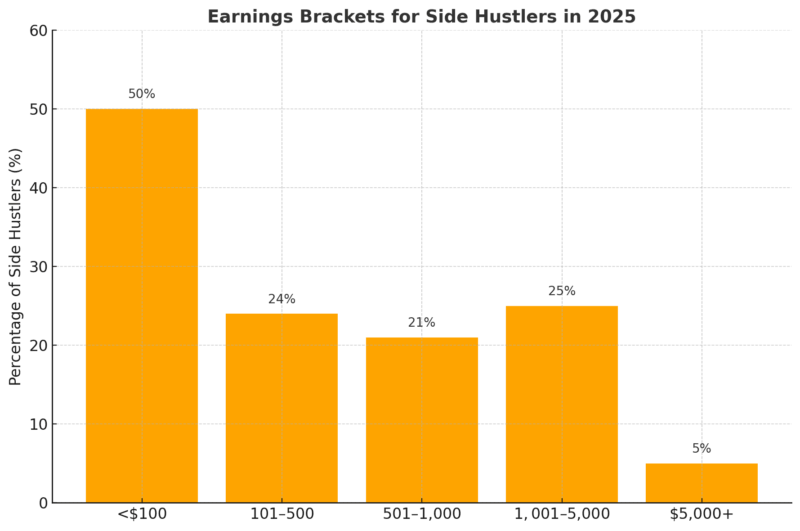
What this breakdown shows is a ladder of potential. Half of all hustlers start small, earning under $100. But as consistency grows, opportunities open up to reach thousands per month.
The top 5%, those making over $10k per month, are usually people who have shifted from “side hustle” to business ownership.
Most Popular Hustles Beyond Apps
It’s easy to assume side hustles = delivery apps, because platforms like DoorDash, Uber, and Instacart dominate the conversation.
But Side Hustle Nation’s survey shows that when people build hustles independent of apps, they often unlock higher earning potential and more personal control.
Category
Examples
Why It’s Popular
Online Business
Blogging, YouTube, courses, newsletters, podcasts
Scales well, low startup cost, potential for passive income.
E-Commerce
Amazon reselling, Etsy shops, dropshipping, eBay
Huge demand for online retail, flexible entry points.
Freelancing & Consulting
Writing, design, marketing, coding
Skilled workers can charge higher hourly rates.
Investing
Real estate, stocks, crypto
High barrier but high reward; more common among $5k+/month earners.
Local Services
Cleaning, pet care, handyman, tutoring
Stable demand, especially in suburban and smaller markets.
The key insight here: app-based hustles dominate participation, but non-app hustles dominate income growth. Someone can start delivering groceries tomorrow with no barrier to entry.
But those who learn to run an online store, build a newsletter audience, or sell freelance skills often scale into the higher income brackets faster.
Final Words: What Side Hustles in 2025 Tell Us
@officialadamerhart Ultimate Side Hustle Tier List 2025 #sidehustleforbeginners #workfromhome #moneymoves ♬ original sound – Adam Erhart
The numbers make one thing clear: side hustling is no longer a backup plan – it’s a core feature of the modern American economy. In 2025, nearly four out of ten adults are balancing a side gig, and younger generations are leading the way.
What those hustles look like, and how much they earn, depends on where you live, how much time you put in, and whether you stick to apps or branch out into independent businesses.
The bottom line? Side hustles in 2025 reflect both necessity and ambition.
For some, it’s a way to pay bills; for others, it’s a path to independence. And with over 3 million new hustles started every year, the landscape is only going to grow more competitive, diverse, and creative.
Related Posts:
- 10 Most Popular Streaming Platforms in the US 2025
- Wyoming Fatal Crashes in 2025 (So Far) vs. Previous…
- US States with the Highest and Lowest Dental Care…
- Ranking America’s 21 Most Celebrated Holidays and…
- 26 Most Dangerous Cities in the World 2025 - Where…
- Who Pays the Most Taxes in America? Breakdown by…
